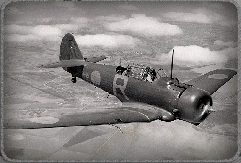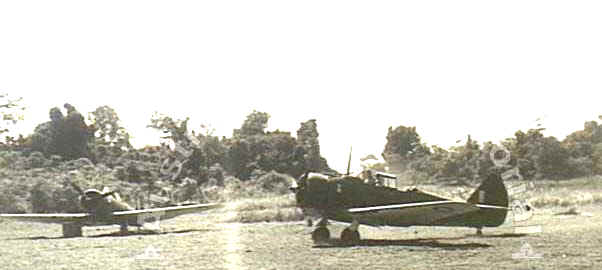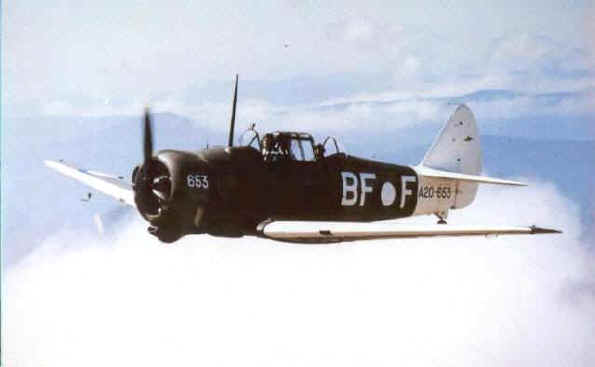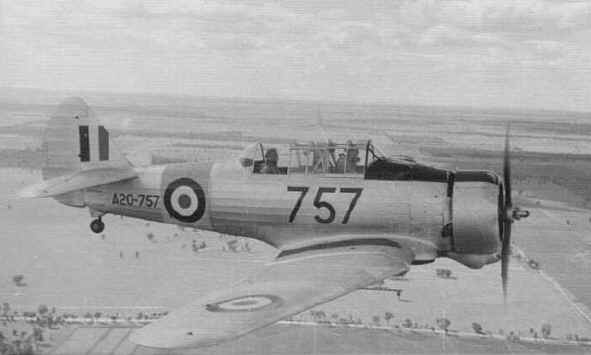 |
|
|||
|
|
||||
|
Trainer, Fighter, Dive Bomber; and not very good |
|||
 |
Commonwealth Aircraft Corporation WIRRAWAY "The Pilot Maker" 755 built |
||
|
|||
| The Wirraway (Aboriginal
for 'Challenge' or "Challenger") was the first product of the new, privately owned
Commonwealth Aircraft Corporation (CAC), and was a licence-built
derivative of the North American NA-16 (known variously as the 'Texan'
or 'Harvard'). In appearance, the most obvious differences are the
D-shaped rudder on the Wirraway, and variations to the intake below the
cowling.
One NA-16-1A and one NA-16-2K (or NA-33) were imported as construction examples. These were serialled A20-1 and A20-2. Subsequent Wirraways were serialled A20-3 to A20-755 in an unbroken series. The Wirraway differed from the U.S. trainer prototype in having an armed capability, with provision for two fixed forward machine guns of rifle calibre above the engine, and a flexible machine gun of similar calibre in the rear cockpit. Light bomb racks could be fitted under the wings. It was a sign of the straits the RAAF was in at the time that a general purpose trainer should be built with these provisions, due to a lack of funding for purpose-built fighters and bombers. 755 were built between 1939 and mid-1946. They were built as variants CA-1, CA-3, CA-5, CA-7, CA-8, CA-9, CA-10 and CA-16, but were basically very similar. The CA-10 was a dive bomber design, with dive brakes, improved wing and capacity for a heavier load. They filled various roles in addition to that of trainer, from 'hack' to combat aircraft. They were Rabaul's main air defence in early 1942, when eight took on a Japanese raid of 100 aircraft, the results being disastrous for the defenders. A Wirraway did manage to down a Zero in December that year, near Gona. The RAAF's last Wirraway flight was in December 1958 at Point Cook, Victoria. They were replaced by Winjeels. |
|
|
| CAC CA-16 Wirraway A20-757, c/n 1209, taken in 1950 whilst on a test flight after servicing at Maintenance Squadron Point Cook, flying between Geelong and Point Cook. This was the last Wirraway delivered, in June 1946. It was sold to R.H. Grant Trading Co. in February 1960. Photo; Graeme Semken |



